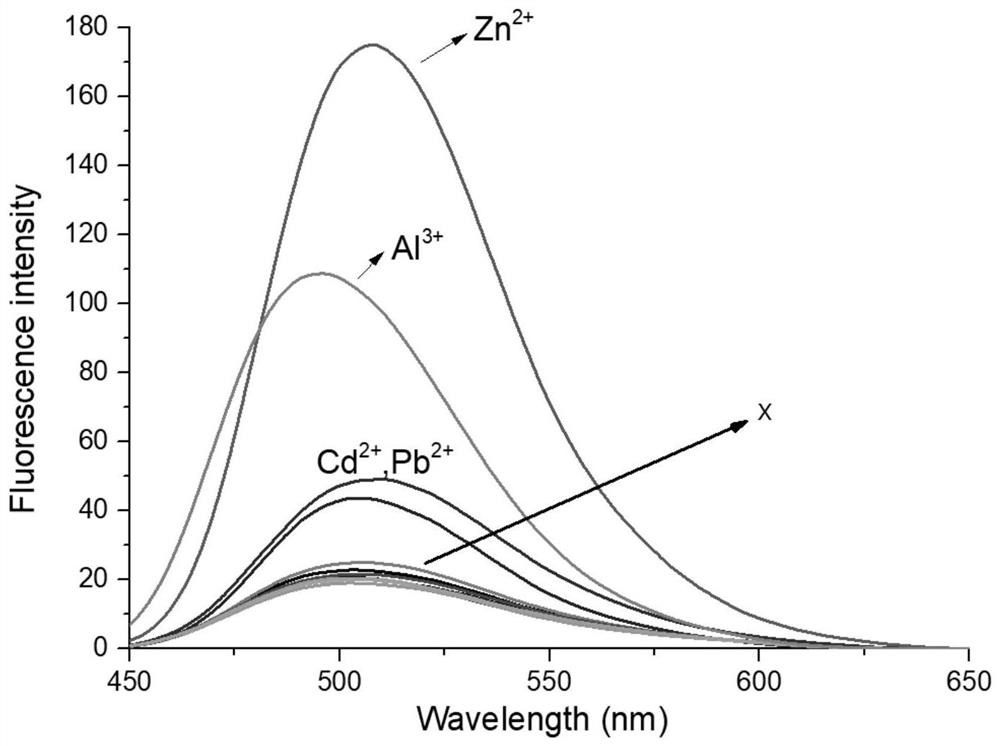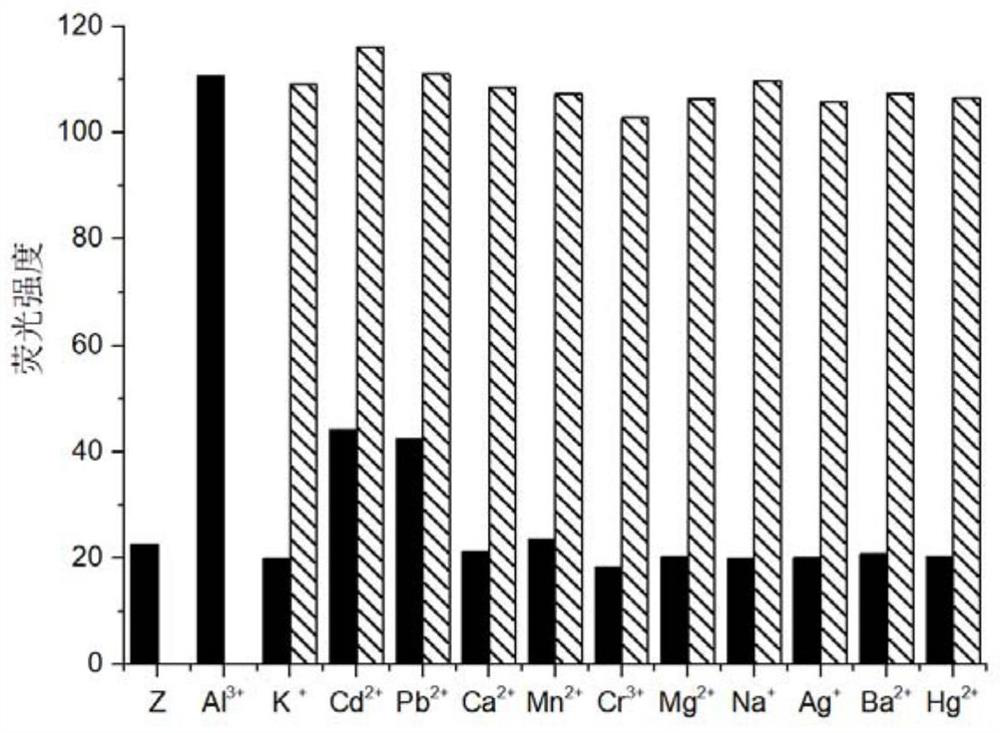A bifunctional fluorescent probe for recognizing aluminum ions and zinc ions and its preparation method and application
A technology of fluorescent probes and zinc ions, applied in chemical instruments and methods, fluorescence/phosphorescence, luminescent materials, etc., can solve the problems of low selectivity and sensitivity, cumbersome probe synthesis steps, etc.
- Summary
- Abstract
- Description
- Claims
- Application Information
AI Technical Summary
Problems solved by technology
Method used
Image
Examples
specific Embodiment approach 1
[0037] Embodiment 1: The bifunctional fluorescent probe for identifying aluminum ions and zinc ions in this embodiment is a covalent conjugate of 2-(2-hydroxyphenyl)benzothiazole and salicylic hydrazide. The structure is as follows:
[0038]
specific Embodiment approach 2
[0039] Specific embodiment 2: The preparation method of the bifunctional fluorescent probe for identifying aluminum ions and zinc ions in this embodiment includes the following steps:
[0040] One, 5-methylsalicylaldehyde reacts with o-aminothiophenol to obtain compound 1:
[0041] Dissolve 5-methylsalicylaldehyde and o-aminothiophenol in N,N-dimethylformamide (DMF), then add sodium metabisulfite, heat to reflux, and the heating temperature is 110~120°C, reaction 3 After ~4h, the reaction was detected by TCL plate. After the reaction was completed, deionized water was added to the solution after cooling to room temperature, and a pale yellow precipitate was precipitated. The precipitate was filtered, washed with deionized water for 5 to 6 times, and dried to obtain compound 1;
[0042] Wherein the mol ratio of 5-methylsalicylaldehyde and o-aminothiophenol is 1:1;
[0043] 2. The compound 1 obtained in step 1 is reacted with urotropine to obtain compound 2:
[0044]Compound 1...
specific Embodiment approach 3
[0048] Embodiment 3: The difference between this embodiment and Embodiment 2 is that in step 3, after adding compound 2 and salicylic hydrazide to ethanol, glacial acetic acid is also added until the pH of the reaction system is 4-6. Others are the same as in the second embodiment.
PUM
 Login to View More
Login to View More Abstract
Description
Claims
Application Information
 Login to View More
Login to View More - R&D
- Intellectual Property
- Life Sciences
- Materials
- Tech Scout
- Unparalleled Data Quality
- Higher Quality Content
- 60% Fewer Hallucinations
Browse by: Latest US Patents, China's latest patents, Technical Efficacy Thesaurus, Application Domain, Technology Topic, Popular Technical Reports.
© 2025 PatSnap. All rights reserved.Legal|Privacy policy|Modern Slavery Act Transparency Statement|Sitemap|About US| Contact US: help@patsnap.com



